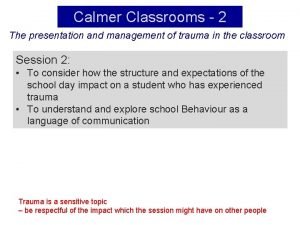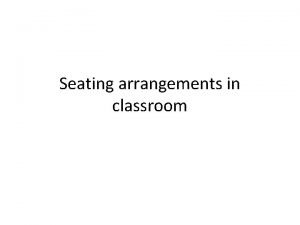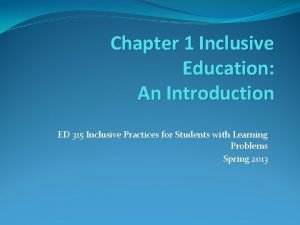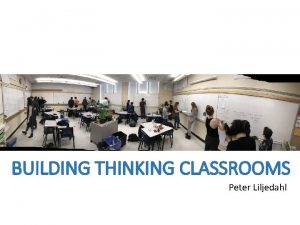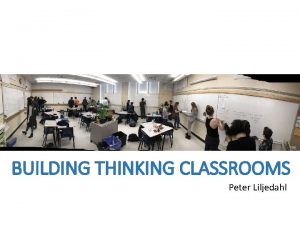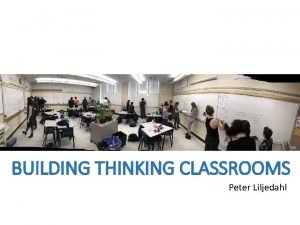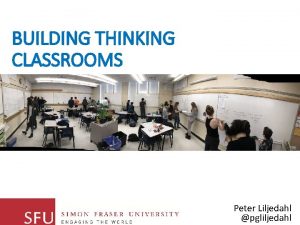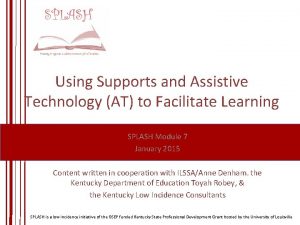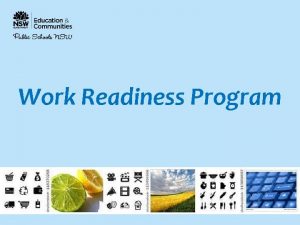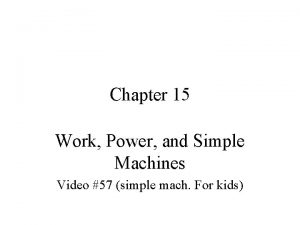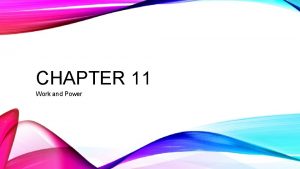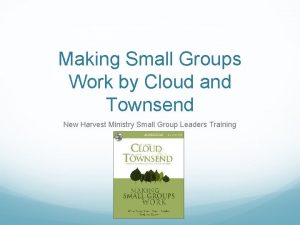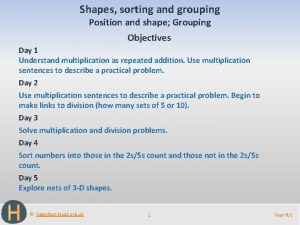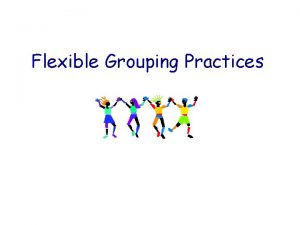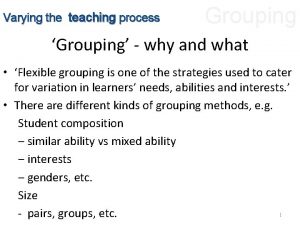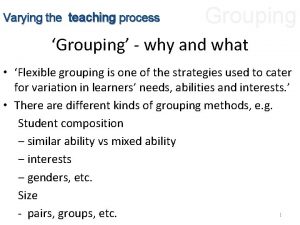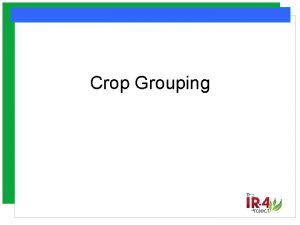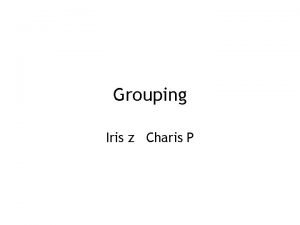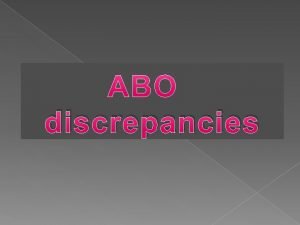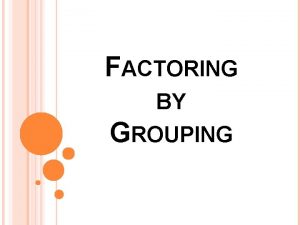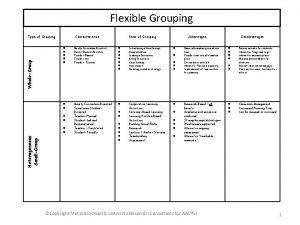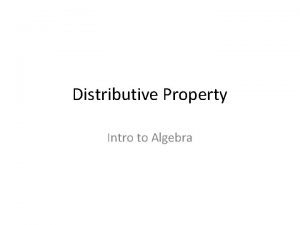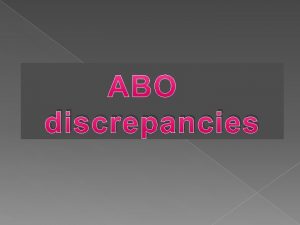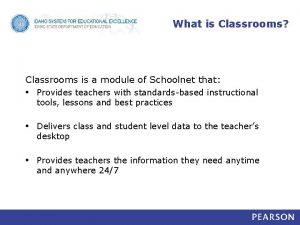Session 11 Grouping and Placement Making Classrooms Work






















- Slides: 22

Session 11 Grouping and Placement: Making Classrooms Work © 2014 Core Knowledge Foundation. This work is licensed under a Creative Commons Attribution. Non. Commercial-Share. Alike 3. 0 Unported License. www. creativecommons. org/licenses/by-nc-sa/3. 0/

Objective We will be able to identify the factors involved when considering flexible grouping options. © 2014 Core Knowledge Foundation. This work is licensed under a Creative Commons Attribution. Non. Commercial-Share. Alike 3. 0 Unported License. www. creativecommons. org/licenses/by-nc-sa/3. 0/ 2

Collecting the Data CKLA data collection process: 1. collect results for individual students 2. place collective results for class on a class summary sheet 3. evaluate the results using placing and grouping guidelines to assign each child a group level based instructional need Note: all tools are included in teacher materials © 2014 Core Knowledge Foundation. This work is licensed under a Creative Commons Attribution. Non. Commercial-Share. Alike 3. 0 Unported License. www. creativecommons. org/licenses/by-nc-sa/3. 0/ 3

Determining Grouping: A Three-Step Process Step 1: Examine the class data. Step 2: Evaluate grouping options (noting benefits and barriers). Step 3: Make a final selection for a grouping strategy. © 2014 Core Knowledge Foundation. This work is licensed under a Creative Commons Attribution. Non. Commercial-Share. Alike 3. 0 Unported License. www. creativecommons. org/licenses/by-nc-sa/3. 0/ 4

Step 1: Examine the Data • Categorized by administered tests • Student scores • Grouping designations © 2014 Core Knowledge Foundation. This work is licensed under a Creative Commons Attribution. Non. Commercial-Share. Alike 3. 0 Unported License. www. creativecommons. org/licenses/by-nc-sa/3. 0/ 5

Interpreting Scores: Individual Child Designations • In first and second grade, there are formal charts to help use assessment data. • In K, the ‘group’ designation is more qualitative and based on trends of unit assessments. © 2014 Core Knowledge Foundation. This work is licensed under a Creative Commons Attribution. Non. Commercial-Share. Alike 3. 0 Unported License. www. creativecommons. org/licenses/by-nc-sa/3. 0/ 6

General Guidance for K • Group 1: Child is well prepared (outstanding, strong) for the next step (e. g. , in K for Unit 6; for 1 st and 2 nd, assessment determines how prepared child is for grade-level material). • Group 2: Child is adequately prepared for the next step (but may have some vulnerability and/or need targeted practice/targeted reinforcement to manage the next step). • Group 3: Child has questionable preparation for the next step. This child may require significantly slowing pace and/or may not be prepared for the grade-level material without significant support. © 2014 Core Knowledge Foundation. This work is licensed under a Creative Commons Attribution. Non. Commercial-Share. Alike 3. 0 Unported License. www. creativecommons. org/licenses/by-nc-sa/3. 0/ 7

Checking Case Data Against Grouping Designation • Examine grouping designation ¦ ¦ Planning and Grouping Sheet (H) Examining Student Data Record Sheet (Step 1) TW p. For Grades 1, and 2 use placement charts in back of assessment packet For Grade K, use criteria on bottom of K Planning and Grouping sheet. © 2014 Core Knowledge Foundation. This work is licensed under a Creative Commons Attribution. Non. Commercial-Share. Alike 3. 0 Unported License. www. creativecommons. org/licenses/by-nc-sa/3. 0/ 8

Determining Grouping: A Three-Step Process Step 1: Examine the class data. Step 2: Evaluate grouping options (noting benefits and barriers). Step 3: Make a final selection for a grouping strategy. © 2014 Core Knowledge Foundation. This work is licensed under a Creative Commons Attribution. Non. Commercial-Share. Alike 3. 0 Unported License. www. creativecommons. org/licenses/by-nc-sa/3. 0/ 9

Step 2: Evaluate the Options • Consider three different approaches for grouping students • Derived from observations in field ¦ ¦ 3 instructional groups per class 3 classrooms per grade (H) © 2014 Core Knowledge Foundation. This work is licensed under a Creative Commons Attribution. Non. Commercial-Share. Alike 3. 0 Unported License. www. creativecommons. org/licenses/by-nc-sa/3. 0/ 10

Step 2: Evaluate the Options TW. p. H Directions for activity: • Work in grade-level group to evaluate the scenarios • Use the Evaluate Barriers and Benefits of Grouping Options Record Sheet (Part 2) • Choose 2 questions to walkthrough scenarios © 2014 Core Knowledge Foundation. This work is licensed under a Creative Commons Attribution. Non. Commercial-Share. Alike 3. 0 Unported License. www. creativecommons. org/licenses/by-nc-sa/3. 0/ 11

Determining Grouping: A Three-Step Process Step 1: Examine the class data. Step 2: Evaluate grouping options (noting benefits and barriers). Step 3: Make a final selection for a grouping strategy. © 2014 Core Knowledge Foundation. This work is licensed under a Creative Commons Attribution. Non. Commercial-Share. Alike 3. 0 Unported License. www. creativecommons. org/licenses/by-nc-sa/3. 0/ 12

Step 3: Choose An Approach: Team Brainstorming (A) Team Brainstorming: • Instructional Teams: ¦ ¦ Based on your reflection of the three options, and considering your school(s), which option would be the best fit? Be ready to share your preferred choice and why Note: This does not need to be the final decision – but what you are leaning toward at this point in time © 2014 Core Knowledge Foundation. This work is licensed under a Creative Commons Attribution. Non. Commercial-Share. Alike 3. 0 Unported License. www. creativecommons. org/licenses/by-nc-sa/3. 0/ 13

Step 3: Choose An Approach: Gathering New Ideas (B) Gathering New Ideas: • Stand network with an individual from another school/district: ¦ ¦ ¦ A – Share the option you chose and rationale B – Share the option you chose and rationale Open Exchange – ask each other questions about choice © 2014 Core Knowledge Foundation. This work is licensed under a Creative Commons Attribution. Non. Commercial-Share. Alike 3. 0 Unported License. www. creativecommons. org/licenses/by-nc-sa/3. 0/ 14

Step 3: Choose An Approach: Team Decision (C) Team Decision: • Share Ideas gathered during networking • Decide on grouping option • Note: ¦ ¦ What are the benefits of this option? What are the barriers? • Graph your Decision • Debriefing of grouping option decisions © 2014 Core Knowledge Foundation. This work is licensed under a Creative Commons Attribution. Non. Commercial-Share. Alike 3. 0 Unported License. www. creativecommons. org/licenses/by-nc-sa/3. 0/ 15

Individual Classrooms Have Diverse Student Needs K 1 2 Class 1 Class 2 © 2014 Core Knowledge Foundation. This work is licensed under a Creative Commons Attribution. Non. Commercial-Share. Alike 3. 0 Unported License. www. creativecommons. org/licenses/by-nc-sa/3. 0/ 16

Classroom Level Grouping Narrows the Range of Needs to Be Addressed During Instruction and Practice K 1 2 Class 1 Class 2 © 2014 Core Knowledge Foundation. This work is licensed under a Creative Commons Attribution. Non. Commercial-Share. Alike 3. 0 Unported License. www. creativecommons. org/licenses/by-nc-sa/3. 0/ 17

Grade Level Grouping Further Narrows the Range of Needs To Be Addressed During Instruction & Practice K 1 2 Class 1 Class 2 © 2014 Core Knowledge Foundation. This work is licensed under a Creative Commons Attribution. Non. Commercial-Share. Alike 3. 0 Unported License. www. creativecommons. org/licenses/by-nc-sa/3. 0/ 18

Grouping Across All Grades Allows for Even Tighter Groups with Similar Needs K 1 2 Class 1 Class 2 © 2014 Core Knowledge Foundation. This work is licensed under a Creative Commons Attribution. Non. Commercial-Share. Alike 3. 0 Unported License. www. creativecommons. org/licenses/by-nc-sa/3. 0/ 19

Providing Appropriate Dosage & Exposure Avoiding Common Traps © 2014 Core Knowledge Foundation. This work is licensed under a Creative Commons Attribution. Non. Commercial-Share. Alike 3. 0 Unported License. www. creativecommons. org/licenses/by-nc-sa/3. 0/

Trying to Do or Keep Too Much • Time is the Most Precious Classroom Resource • Change is Hard • Consider the Overlap ¦ Intersection of Goals of Instruction and ELA components © 2014 Core Knowledge Foundation. This work is licensed under a Creative Commons Attribution. Non. Commercial-Share. Alike 3. 0 Unported License. www. creativecommons. org/licenses/by-nc-sa/3. 0/ 21

Reflection • Do you feel you would be able to apply the grouping option chosen in your school? Why or why not? • If not, do you feel you have a sense of any trade-offs that you may be making and how to be strategic in managing these? © 2014 Core Knowledge Foundation. This work is licensed under a Creative Commons Attribution. Non. Commercial-Share. Alike 3. 0 Unported License. www. creativecommons. org/licenses/by-nc-sa/3. 0/
 Calmer classroom
Calmer classroom Vocareum aws
Vocareum aws Desk arrangements for classrooms
Desk arrangements for classrooms Global classroom position paper
Global classroom position paper Inclusive chapter 1
Inclusive chapter 1 Peter liljedahl thinking classrooms
Peter liljedahl thinking classrooms Peter liljedahl thinking classrooms
Peter liljedahl thinking classrooms Peter liljedahl thinking classrooms
Peter liljedahl thinking classrooms Thinking classroom
Thinking classroom Peter liljedahl building thinking classrooms
Peter liljedahl building thinking classrooms Bringing the universe to america's classrooms
Bringing the universe to america's classrooms Assistive technology in classrooms
Assistive technology in classrooms Building thinking classrooms
Building thinking classrooms War making and state making as organized crime
War making and state making as organized crime Go2workplacement
Go2workplacement Go2workplacement
Go2workplacement What is inferring
What is inferring Chapter 4 section 1 work and machines answer key
Chapter 4 section 1 work and machines answer key Making marriages work
Making marriages work Defensible decision making examples
Defensible decision making examples Making work easier
Making work easier Seesaw
Seesaw Making small groups work
Making small groups work
